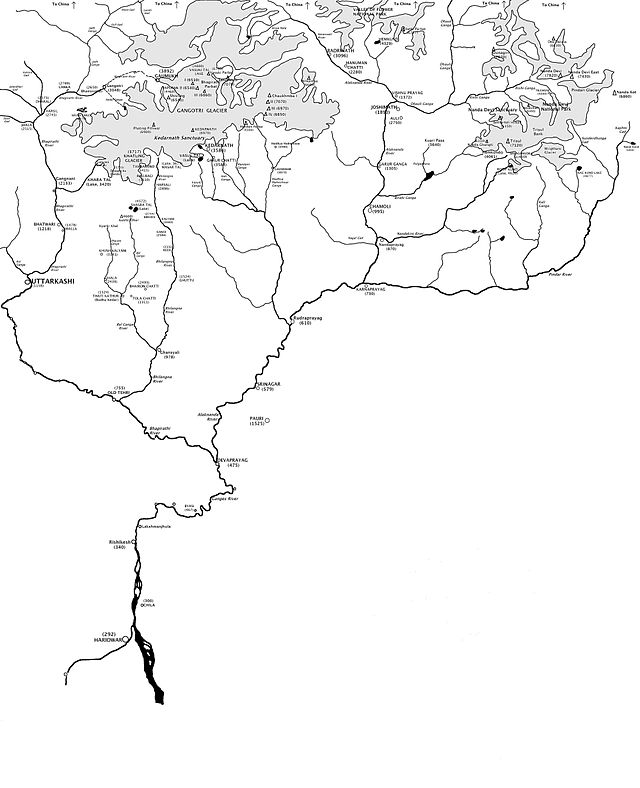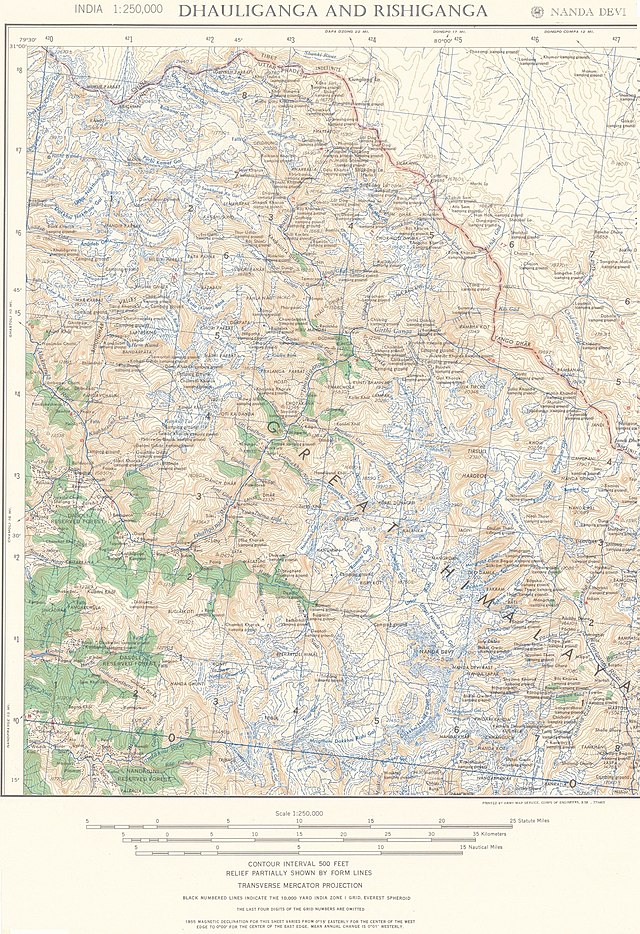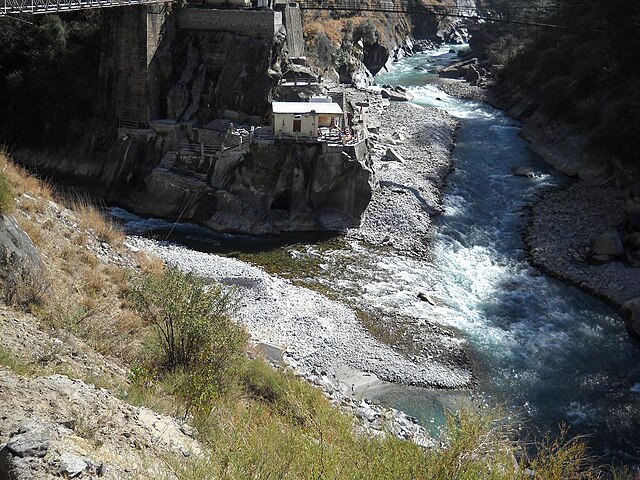Dhauliganga River
River in Uttarakhand, India From Wikipedia, the free encyclopedia
River in Uttarakhand, India From Wikipedia, the free encyclopedia
The Dhauliganga is a turbulent Himalayan river which rises in the border regions of India and China and flows south into the Garhwal region of Uttarakhand, India. It joins the Alaknanda, the major source stream of the Ganges river.




Dhauliganga rises in the vicinity of the Niti Pass in the border regions between Garhwal and southwestern Tibet.[1] It flows 50 km (30 mi) southwards until it meets the Rishiganga on its left bank at Rini, in the vicinity of Tapovan in Chamoli district. It then flows 20 km (10 mi) westwards until it meets the Alaknanda at Vishnuprayag and terminates—the confluence just upstream of the city of Joshimath.[1] The upper Dhauliganga valley parts the East-West Himalayan axis, with Nanda Devi and its subsidiary peaks to its left and Kamet and its subsidiary peaks to its right.[1]
On 7 February 2021, part of Nanda Devi Glacier, a Himalayan glacier in the Nanda Devi National Park, broke away and caused water levels in the Rishiganga and Dhauliganga rivers to rise. The Dhauliganga Dam at the Dhauliganga hydropower project at Reni village (30.485°N 79.691°E) was destroyed and another suffered partial collapse. Initial reports said nine people were killed and 140 missing. Water levels on the Alaknanda also rose.[2][3]
Seamless Wikipedia browsing. On steroids.
Every time you click a link to Wikipedia, Wiktionary or Wikiquote in your browser's search results, it will show the modern Wikiwand interface.
Wikiwand extension is a five stars, simple, with minimum permission required to keep your browsing private, safe and transparent.